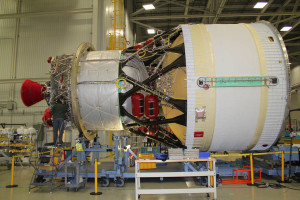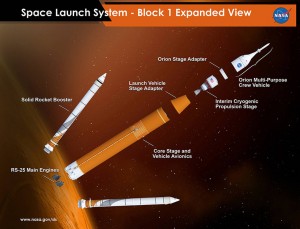Progress continues to be made toward future human missions into deep space. NASA is hard at work getting the Orion spacecraft ready for its flight in 2018 – the capsule that will take humans to multiple deep space destinations and return them safely to Earth.
What will launch Orion into space? NASA’s new rocket, Space Launch System (SLS). Not only will it launch Orion, but the rocket is evolvable and will be able to support a variety of deep space missions in the future.
The first integrated mission of SLS and Orion will launch in 2018. Exploration Mission-1, or EM-1, will send Orion tens of thousands of miles beyond the moon before returning it to Earth a few weeks later.
Once the Orion spacecraft is in space, what will give it the push to send it beyond the moon and back? That’s the role of the interim cryogenic propulsion stage, or ICPS.
ICPS uses liquid oxygen and liquid hydrogen. It was designed by Boeing, a founding member of the Coalition.
Where does the ICPS sit on the rocket? Take a look:
SLS block 1. Image credit: NASA/MSFC
With major assembly of the ICPS now complete, we are a step closer to deep space human exploration.
Image Credit: ULA
What is it enabling?
The ICPS, as an important part of Exploration Mission-1, will be helping to ensure Orion can get into a stable orbit in cislunar space. This will allow the area around the moon to be used as a proving ground for systems to be tested farther from Earth, paving the way for NASA’s Journey to Mars.
What’s next? Avionics will be installed on the ICPS and it will be transported by barge and road to Florida. Once there, it will undergo avionics and system-level testing and be delivered to NASA in mid-2017.
Learn more about the massive SLS rocket at NASA.gov.


